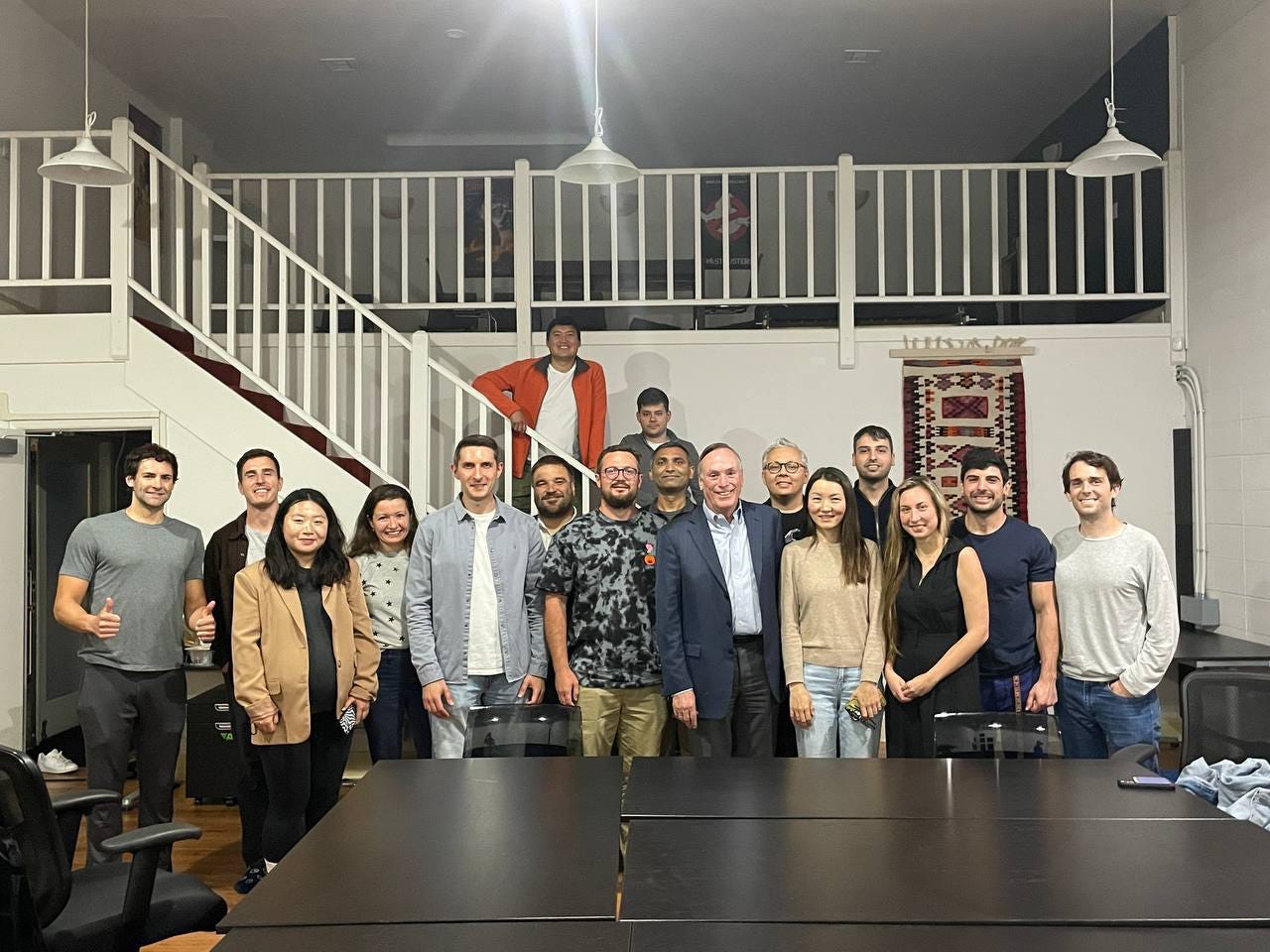Dan Warmenhoven, Ex-CEO of NetApp
Discipline to power
Last week, we had the opportunity to have dinner with Dan Warmenhoven, the former CEO of NetApp, who successfully grew the company from a Series A startup to a leading public company in the networking space.
Here are the key takeaways from our discussion:
Dan highlighted two distinct company structures: decentralized organizations, such as HP, and hierarchical ones, like IBM. Decentralized companies foster a culture of autonomy, empowering teams and employees to make decisions and drive innovation. In contrast, hierarchical companies typically rely on centralized decision-making processes and emphasize top-down management. Warmenhoven stressed the importance of delegation over giving strict instructions, as individuals at the operational level often possess valuable knowledge and perspectives to solve problems effectively.
Silicon Valley's journey to success can be precarious, where the margin between achieving remarkable success and facing colossal failure is remarkably narrow. Warmenhoven shared a cautionary tale based on his involvement with Theranos while serving on its board. Despite being on the verge of groundbreaking discoveries in Zika virus testing, the company's irreversible mistakes led to its demise. Warmenhoven underscored the significance of maintaining integrity and transparency throughout business endeavors, as failure can have severe consequences.
Measuring the productivity of engineers is a complex undertaking that extends beyond mere objective assessments. Warmenhoven emphasized that engineering productivity encompasses a multitude of factors that go beyond quantitative measurements. While metrics like lines of code or completed tasks offer some insights, they often need to capture engineers’ work’s true value and impact. Warmenhoven advocated for a holistic approach that considers aspects such as innovation, problem-solving abilities, collaboration, and the ability to deliver high-quality products within set deadlines. He suggested a combination of quantitative and qualitative evaluations, along with effective feedback mechanisms, as crucial for accurately assessing and enhancing engineers' productivity.
Warmenhoven challenged the conventional notion that customers always pay for products or services received. He provided valuable insights into the sales process, explaining that while customers ultimately pay for the value they receive, initial engagements often commence with free trials or pilot programs. These opportunities allow customers to experience the product or service firsthand, comprehend its value, and evaluate its suitability for their organization. Warmenhoven emphasized the significance of effective upselling strategies to convert trial customers into paying customers once the value proposition is demonstrated and confirmed. He further highlighted the need for businesses to continually refine their understanding of the value they offer and adapt pricing and sales approaches accordingly.

